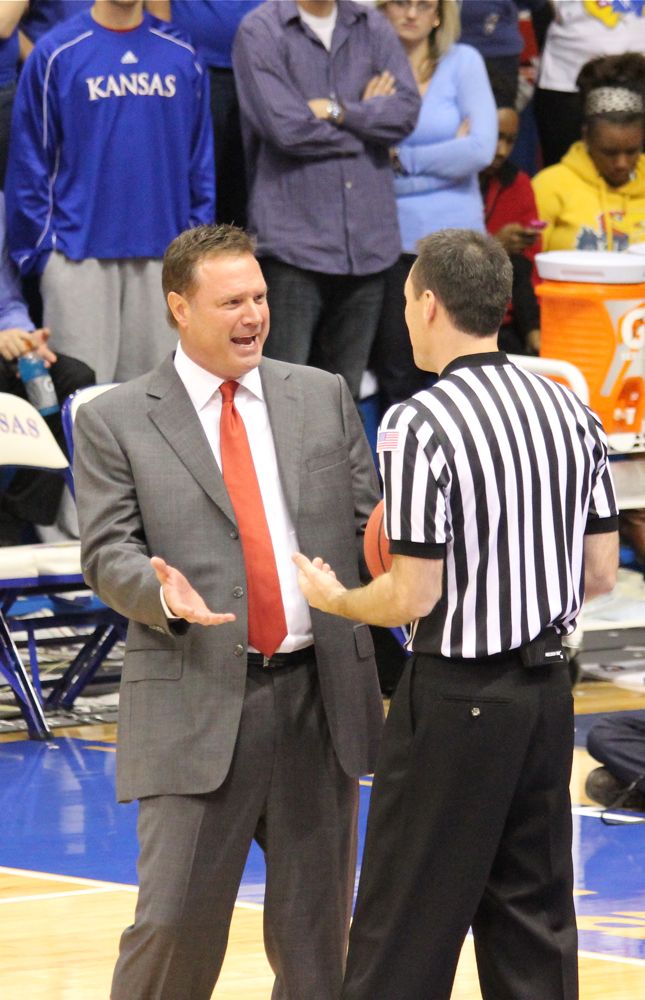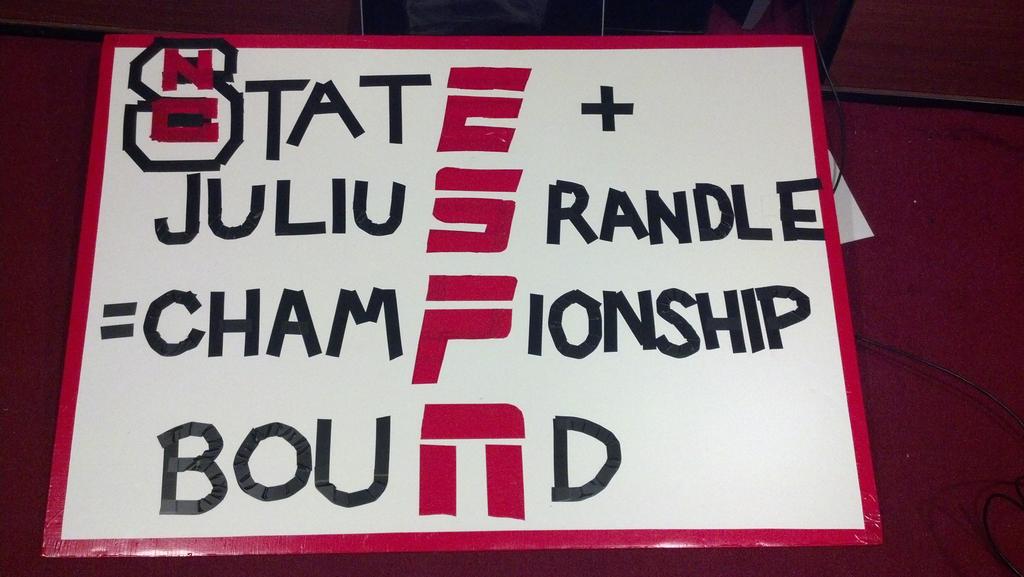I’ll admit it. I’m kind of a slut for flash-in-the-pan Internet crazes.
You know how it works. You receive a link in a chat window, a message on Facebook, a retweet into your timeline. It’s a video, a picture, a “meme” or a dance. You watch it, you love it, and you find yourself searching out other examples.
Only thing I love more than awesome things on the Internet is KU basketball. This team has found a way to marry these two wonderful things.
What follows is a beautiful little video from the KU basketball team. It’s their version of the “Harlem Shake.”
It makes sense if you think about it — this team getting on board with a dance craze. As we’ve surely all seen by now, these guys are all about dancing. Who can blame them? Dancing is awesome.
There are about a million different Harlem Shake videos out there right now. This is obviously my favorite. First, a quick background. The Harlem Shake meme generally requires three things (1) at the beginning of the video one person is dancing with the crowd not paying attention; (2) when the bass or hook drops, everyone is dancing, usually with some sort of costume or general ridiculousness; (3) well, that’s it, really.
I thought it’d be interesting to take a closer look at this video, person by person. I urge you to re-watch the video each time you read a paragraph and focus only on that one person or group. It’s worth the individual attention to detail.
Bill Self: He doesn’t really fit into the meme recipe described above, but I appreciate his involvement in the shoot. He’s pictured drawing up some spectacular inbounds plays (I’m particularly impressed with the top left play, which aims to open up Ben for a corner 3). Self’s cameo ends with him erasing four of the six plays (he keeps the good one) and writing “Harlem Shake!!!” on the board and walking away. Note: Evan Manning is the only player pictured and he doesn’t seem to give one shit at all about what Coach is drawing up.
Ben McLemore: Of late, he has been the star of the Kansas basketball dance troupe. This video probably wouldn’t be a thing if not for Ben’s previous escapades, first documented in a post-Ohio State locker room celebration and later in a post-KSU dance. Ben gets us started with a solo version of “The McLemore” dance — a healthy mix between Hava Nagila, the C-Walk, and Saturday Night Fever. In any event, it’s freakin’ awesome. So there he is, dancing away while everyone is suiting up for practice — everyone except Elijah Johnson, who seems to have discovered nappy time. Ben’s also wearing the head of a chicken costume, just because. Cut to the new scene and Ben has shed the mask but found the rest of the chicken costume, again, just because. His chicken walk through the last few seconds of the scene is pure amazeballs.
Justin Wesley: Of any Jayhawk, Justin should know what it takes to shine in front of a camera. He spent the offseason playing Wilt Chamberlain in the upcoming movie, Jayhawkers. It makes you wonder why he chose one of the easiest theatrical stunts — that is, struggling to put his practice jersey on over his head — during Ben’s dance. He certainly makes up for it after the break, center frame, going full on kilt and chains. I have 10:1 that look will be in a new Chief Keef music video within the next calendar year. Flawless.
Naadir Tharpe: We’ve seen his dance moves a few times this season. His default move seems to be the “Robot.” You probably have that buddy that has a default move to the “Robot” too. Your buddy isn’t very good at it. Neither is Naadir. But it’s still sort of endearing. You have to think his teammates told him to wait in the wings and then when the time is right, just sachet across the shot from stage left to right, employing that signature move. I also tend to think that Naadir owns that green vest and did not need to make a visit to the KU Theatre Department’s prop room before filming.
Niko Roberts, Christian Garrett, and Landen Lucas: These three really need to be discussed together because of their roles in a truly meta sub plot going on inside this video. We first see Niko, in full-on onesie pajamas, a bib, and a pacifier. He seems to really be into his dance moves until he is completely distracted by a gigantic fly hanging from a 6-iron. What pacifier-sucking kid wouldn’t want to follow that? Especially if that pacifier sucking kid is also armed with a butterfly net!!! Too bad we couldn’t see just three more seconds of the video. I hope he caught that pesky fly. Meanwhile, Christian decided to go with the half-KU football player in December after a workout coat, half-Roman soldier look. He has some nice moves with that shield before taking Santa Landen on a ride in the equipment cart. Landen is holding the 6-iron/fly thingy while seemingly jamming to his own Keith Sweat slow jam that only he can hear.
Jeff Withey and Jamari Traylor: Jeff is attempting his best Slash impression, but is failing miserably. I would have preferred to see Jeff play a more vital role than “awkward white 7-footer with wig that plays fake guitar in socks,” but that’s just me. To his credit, he actually makes out a couple legit power chords between the three or four times he adjusts his hair. Like a true 80s guitarist. Jamari, on the other hand, goes with the mini-acoustic, black leather vest, and sombrero get-up. He seems to be the most accomplished musician in the bunch, with most of his focus going toward his craft. He’s also, umm, very muscly.
Travis Releford: He is probably the one in the video that makes me giggle the most. He is sporting the black boots, shorts, and soccer jacket of one of those club teams or countries or something (Germany, maybe? Clearly a huge soccer fan here), and is swinging the everliving shit out of some beads (?). His facial expressions are the real sell, though. Absolute gold, especially in slow motion.
Elijah Johnson: We know he’s been struggling to find his place on the court of late. Not here. He plays the creepy, masked joker Santa PERFECTLY. You might miss him the first couple times you watch it, but he emerges from behind Ben and finds his way to orchestra right by the end of the shot. He looks confused, but don’t let him trick you. That’s what he wants you to think.
Kevin Young and Company: Speaking of creepy, let’s talk about the guy in the back wearing the Jason mask and holding a knife. Oh, but he’s wearing a Hawaiian shirt, so it’s not near as bad. He’s standing on a chair, slashing at the air with all his Kevin Young might. You’d think Evan Manning next to him would be just slightly scared, but once again, he’s still not giving one shit. Perry Ellis looks a little scared, but that’s probably more about his discomfort with being in a group setting than a Hawaiian with a huge knife. Then there’s Andrew White III with a big goofy hat. Like Jamari, it appears he’s jamming to a different song as well. Maybe U2 or Bonnie Raitt or something.
Tyler Self: Tyler made the mistake of going shirtless in this shoot. He’s standing near Jamari Traylor, who can pull of shirtless. Tyler, not so much. I do appreciate his decision to play jungle gym on the water pipes running across the ceiling, although I think he geared up to try a “pull-up” and realized he didn’t have the arm strength for it yet. He does earn some points for his mink throw he has draped across his shoulders. Keeps him warm and hides his underdeveloped delts.
Not pictured: Supremely disappointed Rio Adams was not involved. He is the best dancer on the team not named Ben McLemore and he has an argument that he’s even better than Ben. Not sure where he was during the filming, but I’m sad he wasn’t there. Same goes for Joe Dooley and Andrea Hudy, both of which could have added a lot to this just by making a one second cameo.
I hope you enjoyed my write up as much as I enjoyed watching the video 35 times. Happy gameday!





